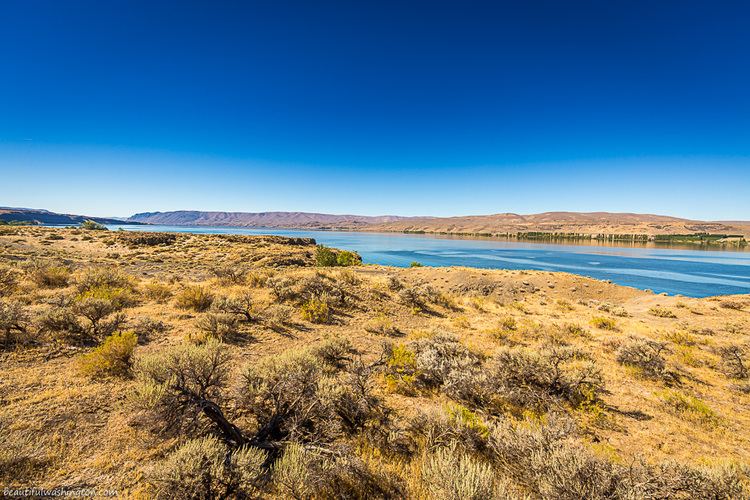 | ||
Highest elevation Mt Adams 12,276 ft (3,741 m) | ||
Dry flat desert like land in eastern washington
Eastern Washington is the portion of the US state of Washington east of the Cascade Range. The region contains the city of Spokane (the second largest city in the state), the Tri-Cities, the Columbia River and the Grand Coulee Dam, the Hanford Nuclear Reservation and the fertile farmlands of the Yakima Valley and the Palouse. Unlike in Western Washington, the climate is dry, including some nearly desert environments.
Contents
- Dry flat desert like land in eastern washington
- 2014 montana at eastern washington
- Climate
- Nomenclature
- Cities
- National Parks and other protected areas
- Limited protection areas
- Counties
- Population
- Education
- Public institutions
- Private institutions
- Research institutions
- Proposed statehood
- References
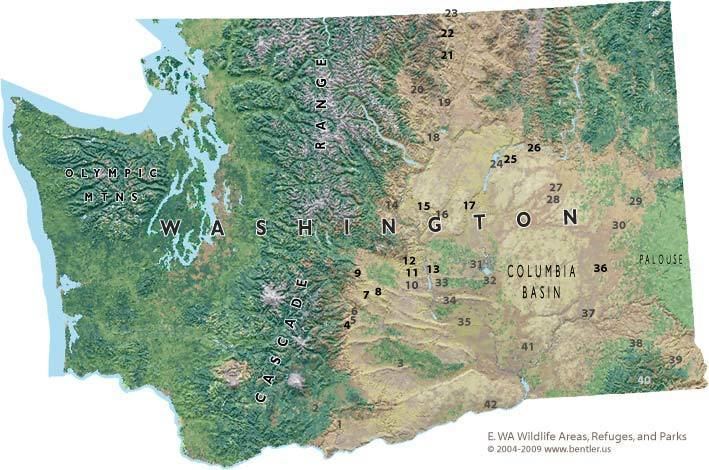
2014 montana at eastern washington
Climate
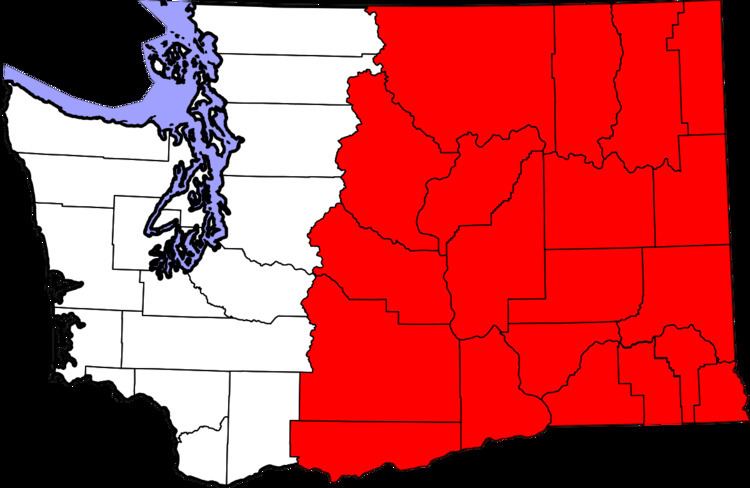
A significant difference between Eastern Washington and the western half of the state is its climate. While the west half of the state is located in a rainy oceanic climate, the eastern half receives little rainfall due to the rainshadow created by the Cascade Mountains. Also, due to being farther from the sea, the east side has both hotter summers and colder winters than the west. Most communities in Eastern Washington, for example, have significant yearly snowfall, while in the west snowfall is minimal and not seen every year. The east and west do still have some climatic traits in common, though: more rainfall in winter than summer, a lack of severe storms, and milder temperature ranges than more inland locations.
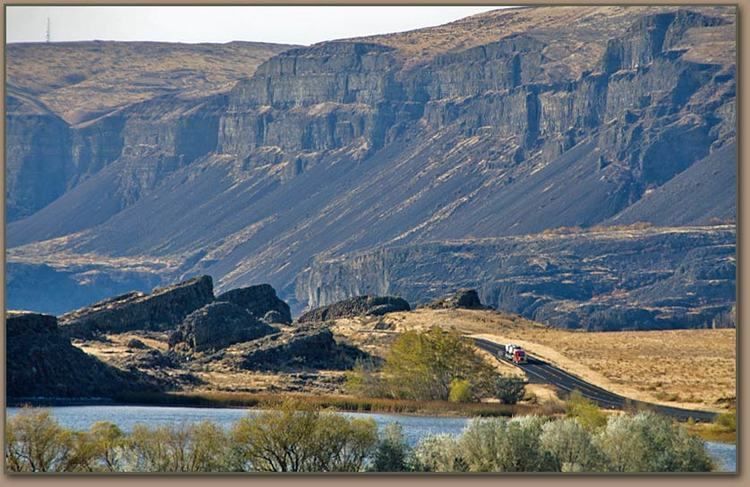
There is some variation in both rainfall throughout Eastern Washington. Generally lower elevations are both hotter and drier than higher elevations. This is easily seen in the comparison between low-elevation Richland with higher elevation Spokane.
Nomenclature
Other terms used for Eastern Washington or large parts of it include:
Cities
The following cities and towns in Eastern Washington have over 10,000 inhabitants.
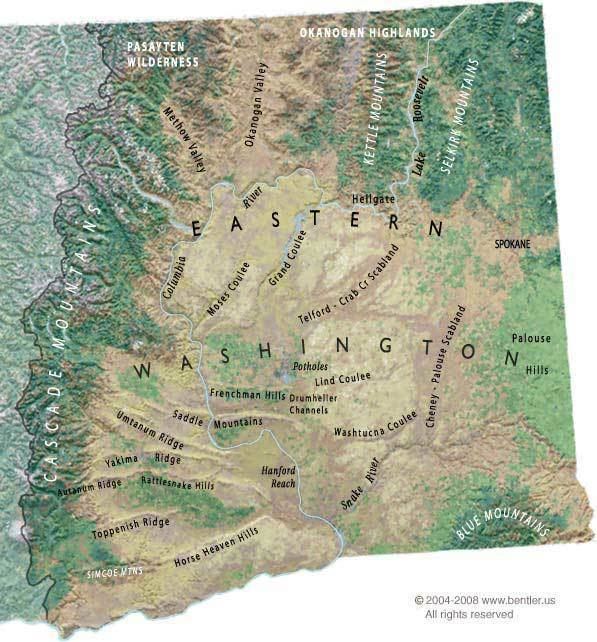
National Parks and other protected areas
Limited protection areas
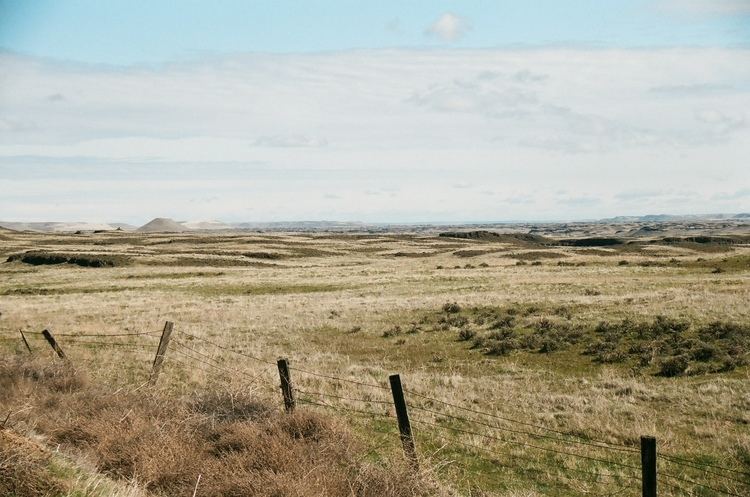
Counties
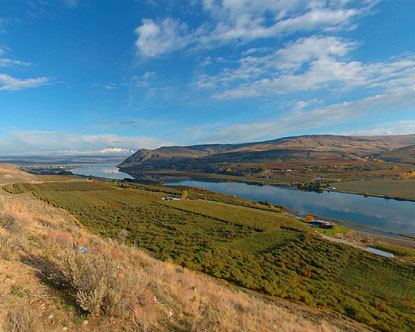
Eastern Washington is composed of Adams, Asotin, Benton, Chelan, Columbia, Douglas, Ferry, Franklin, Garfield, Grant, Kittitas, Klickitat, Lincoln, Okanogan, Pend Oreille, Spokane, Stevens, Walla Walla, Whitman, and Yakima Counties.
Population
Compared to Western Washington, Eastern Washington has roughly twice the land area and one-third the population. According to the U.S. Census Bureau the population estimate as of July 2014 was 1,547,303. The population growth rate between the two is roughly the same. Of Washington's nine Congressional districts, Eastern Washington exactly encompasses two (the 4th and 5th), aside from a small portion of the 4th in Skamania County.
Education
Eastern Washington hosts a number of world-renowned universities including three of the state's five public universities.
Public institutions
Private institutions
Research institutions
Proposed statehood
There have been sporadic movements to create a 51st state out of Eastern Washington by splitting the current state down the Cascades, but proposals have rarely progressed out of the state legislature's committees. Bills in the Washington State Legislature which would have requested the United States Congress to take up the question were proposed in 1996, 1999, 2005, and 2017. Proposed names for the new state have included Lincoln, Columbia, Liberty, or simply Eastern Washington. Many of these proposals were to include the Idaho Panhandle as part of the proposed state of Lincoln.
Eastern Washington tends to vote Republican, whereas Western Washington usually supports the Democrats.
